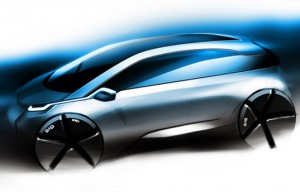 Nearly everyone thinks that generating electricity via solar power is good for the environment, but there’s much less agreement on whether it makes sense from an economic point of view. At what point will solar power be competitive with electricity generated by conventional, fossil-fuel plants, and how long will subsidies need to remain in place before the solar industry can stand on its own? Those are some of the questions addressed in “The Prospects for Cost-Competitive Solar PV Power,” a new working paper by Stefan Reichelstein, William R. Timken Professor of Accounting at the Stanford Graduate School of Business, and Michael Yorston, graduate student in the Department of Management Science and Engineering at Stanford University. Their paper breaks new ground in studying the life-cycle cost of electricity generated by solar photovoltaic, paying particular attention to key factors such as location, public subsidies, and the long-term learning effects in manufacturing solar panels.
Nearly everyone thinks that generating electricity via solar power is good for the environment, but there’s much less agreement on whether it makes sense from an economic point of view. At what point will solar power be competitive with electricity generated by conventional, fossil-fuel plants, and how long will subsidies need to remain in place before the solar industry can stand on its own? Those are some of the questions addressed in “The Prospects for Cost-Competitive Solar PV Power,” a new working paper by Stefan Reichelstein, William R. Timken Professor of Accounting at the Stanford Graduate School of Business, and Michael Yorston, graduate student in the Department of Management Science and Engineering at Stanford University. Their paper breaks new ground in studying the life-cycle cost of electricity generated by solar photovoltaic, paying particular attention to key factors such as location, public subsidies, and the long-term learning effects in manufacturing solar panels.
Concerning the future, and this may sound like a pun, the future of solar PV looks rather bright. The industry has consistently been able to lower the cost of solar panels. If this trend can be maintained for the next 10 years, and if subsidies are continued for that period, there is a real prospect for solar to become cost competitive on its own (that is, without a subsidy), at least for commercial installations. Utility-scale installations will take longer to become competitive; possibly 15 years, though it obviously becomes murkier to make projections that far into the future.
Renewable energy and solar in particular remain rather controversial in the public debate about energy policy. Passions have been running high. What motivated me is the bewildering range of statements you have out there regarding the cost effectiveness of electricity based on solar PV. Given the range of opinions, I wanted to do my own analysis. I’m looking at it from the point of view of a business economist who is interested in measuring the life-cycle cost of this abundant energy source.






